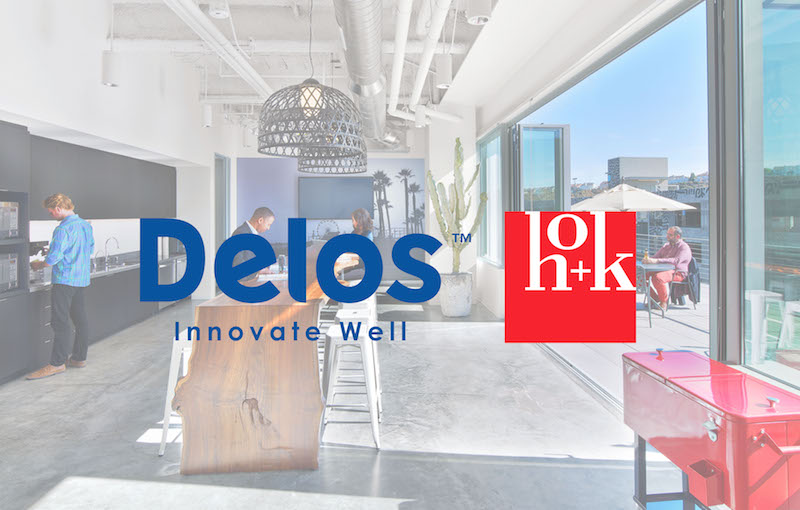HOK has become the latest AEC firm to form a partnership with Delos, the New York-based real estate developer whose International WELL Building Institute’s WELL Building standard establishes performance criteria for occupant health in the built environment.
Within the next 12 months, HOK has committed to put more than 100 of its designers through Delos’s program to become WELL Accredited Professionals (WELL APs).
Bill Hellmuth, AIA, LEED AP, HOK’s chief executive, has joined Delos’ Advisory Board, and will provide strategic counsel on design. HOK will also offer its experts in various practices to provide Delos with research and insight.
Advocates are attempting to promote wellness as the next big thing in nonresidential design and construction, like high performance and sustainability. BD+C’s September issue includes an extensive feature on this movement’s progress. One of the projects cited in that article is a HOK-designed interior renovation of office space in the TD Centre in Toronto to the specifications of the WELL standard for New and Existing Interiors.
“This project for TD is an example of how designers can uses WELL’s performance standards to elevate our ability to create exceptional workplaces,” said Kay Sargent, ASID, IIDA, CID, LEED AP, director of strategic accounts for HOK.
HOK and Delos are now working with Strategic Property Partners, a real estate developer, on the design of multiple buildings within SPP’s mixed-use development on 53 acres in the Channelside district of Tampa, Fla., between Amalie Arena and the central business area.
SPP is a joint venture between Cascade Investments LLC and Jeff Vinik, who owns the Tampa Bay Lightning NHL franchise and has a stake in the Boston Red Sox. This project aspires to be the world’s first WELL-certified city district under the WELL Community standard that is in its early pilot stage.
Components of that standard include enhanced walkability, robust green spaces with low-pollen trees, sound barriers to support acoustic comfort, access to healthy foods, green infrastructure, the daily monitoring and reporting of district air quality, and access to amenities of the urban waterfront.
The redevelopment of Channelside district will include the new 320,000-sf University of South Florida Morsani College of Medicine and Heart Institute, an adjoining 300,000-sf medical office building, and a parking, residential and retail building. It will also feature a 650-room luxury hotel.
SPP intends to begin vertical construction on this project late next year. When all three phases of this district are completed, sometime in the next decade, the redevelopment will have up to 9 million sf of commercial, residential (including 5,000 housing units), educational, entertainment, cultural, and retail space, with total investment exceeding $2 billion.
Related Stories
| Nov 15, 2010
Gilbane to acquire W.G. Mills, Inc.
Rhode Island-based Gilbane Building Company announced plans to acquire W.G. Mills, Inc., a construction management firm with operations based in Florida. The acquisition will dramatically strengthen Gilbane’s position in Florida’s growing market and complement its already established presence in the southeast.
| Nov 11, 2010
Saint-Gobain to make $80 million investment in SAGE Electrochromics
Saint-Gobain, one of the world’s largest glass and construction material manufacturers, is making a strategic equity investment in SAGE Electrochromics to make electronically tintable “dynamic glass” an affordable, mass-market product, ushering in a new era of energy-saving buildings.
| Nov 11, 2010
Saint-Gobain to make $80 million investment in SAGE Electrochromics
Saint-Gobain, one of the world’s largest glass and construction material manufacturers, is making a strategic equity investment in SAGE Electrochromics to make electronically tintable “dynamic glass” an affordable, mass-market product, ushering in a new era of energy-saving buildings.
| Nov 11, 2010
USGBC certifies more than 1 billion square feet of commercial space
This month, the total footprint of commercial projects certified under the U.S. Green Building Council’s LEED Green Building Rating System surpassed one billion square feet. Another six billion square feet of projects are registered and currently working toward LEED certification around the world. Since 2000, more than 36,000 commercial projects and 38,000 single-family homes have participated in LEED.
| Nov 10, 2010
$700 million plan to restore the National Mall
The National Mall—known as America’s front yard—is being targeted for a massive rehab and restoration that could cost as much as $700 million (it’s estimated that the Mall has $400 million in deferred maintenance alone). A few of the proposed projects: refurbishing the Grant Memorial, replacing the Capitol Reflecting Pool with a smaller pool or fountain, reconstructing the Constitution Gardens lake and constructing a multipurpose visitor center, and replacing the Sylvan Theater near the Washington Monument with a new multipurpose facility.
| Nov 9, 2010
Just how green is that college campus?
The College Sustainability Report Card 2011 evaluated colleges and universities in the U.S. and Canada with the 300 largest endowments—plus 22 others that asked to be included in the GreenReportCard.org study—on nine categories, including climate change, energy use, green building, and investment priorities. More than half (56%) earned a B or better, but 6% got a D. Can you guess which is the greenest of these: UC San Diego, Dickinson College, University of Calgary, and Dartmouth? Hint: The Red Devil has turned green.
| Nov 9, 2010
12 incredible objects being made with 3D printers today
BD+C has reported on how 3D printers are attracting the attention of AEC firms. Now you can see how other creative types are utilizing this fascinating printing technology. Among the printed items: King Tut’s remains, designer shoes, and the world’s smallest Rubik’s Cube.
| Nov 9, 2010
U.S. Army steps up requirements for greening building
Cool roofs, solar water heating, and advanced metering are among energy-efficiency elements that will have to be used in new permanent Army buildings in the U.S. and abroad starting in FY 2013. Designs for new construction and major renovations will incorporate sustainable design and development principles contained in ASHRAE 189.1.









